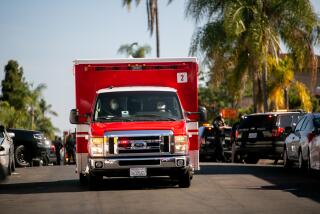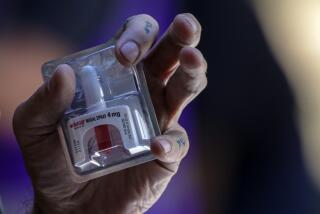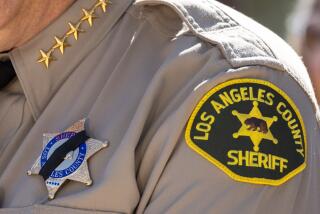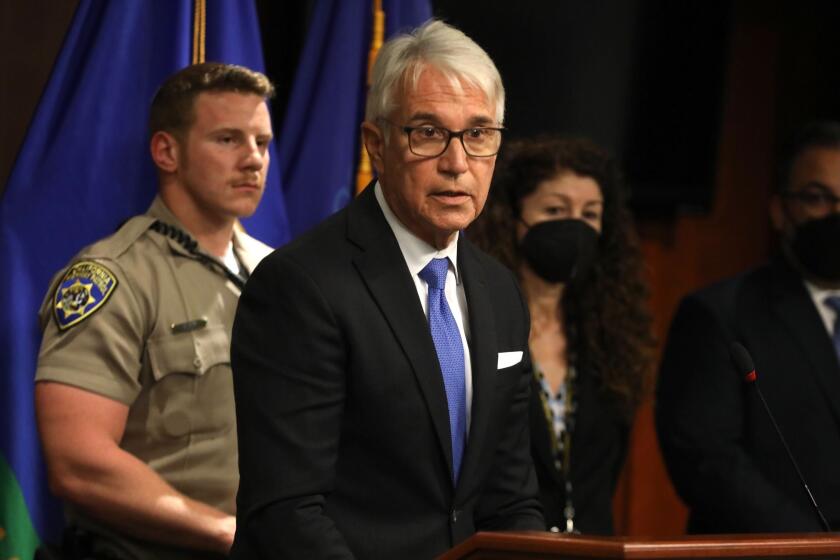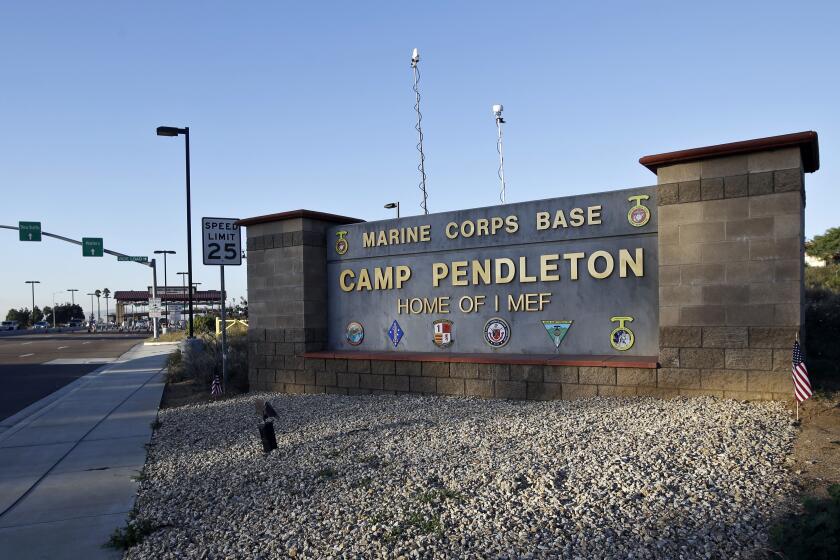Office workers trained in CPR make life-or-death difference
On the morning of July 10, attorney Jerald Gale was reading an e-mail in his office on the 20th floor of a Koreatown high-rise. That’s the last thing the 58-year-old husband, father and avid cyclist remembers before losing consciousness.
Gale’s heart had gone into sudden cardiac arrest. It wasn’t a heart attack, in which blockage cuts off blood flow to the heart. In sudden cardiac arrest, the heart stops pumping because of an electrical problem caused by a rhythm disorder. Gale had been treated for some blockage six years ago, but he was healthy again and under the care of a cardiologist, and he’d had no warning signs that anything was wrong.
That’s often the case with the condition, which is part of the reason it kills roughly 300,000 people a year in the United States — more than die from AIDS, lung cancer, breast cancer and prostate cancer combined.
Gale, however, had one thing going for him — an office staff that wasted no time rushing to his aid.
LueAnn Hooten, Gale’s secretary, saw him listing to one side and called out for someone to dial 911. Kathleen Weiler, the receptionist at Ablon, Lewis, Bass & Gale, rushed into his office and quickly determined that he had stopped breathing.
Weiler, 70, was first trained in CPR as a teenager in the Girl Scouts, and years later, with five daughters and 18 grandchildren to worry about, she repeated the training. But she’d never once needed it, until now.
Weiler gave Gale three quick jabs to the chest. He took a deep breath, then stopped again. Bill Patterson, a paralegal, set Gale down on the carpeted floor, and Weiler checked to make sure his airway was clear. Then she placed the heel of her palm at the center of Gale’s chest and locked her other hand over the first.
As Weiler began a steady stream of quick, hard thrusts, office manager Grace Ito began mouth-to-mouth resuscitation. Even though Gale had no pulse, Weiler hoped the compressions were forcing oxygen into his lungs and brain. But at the 12-minute mark, she was getting winded, and the paramedics had not yet arrived.
“They decided a younger girl should take over,” said Weiler, who quickly instructed the office billing clerk, Adria Montgomery, on compressions.
About six minutes later, paramedics arrived and used defibrillators to get Gale’s heart pumping again before rushing him to Good Samaritan Hospital. It wasn’t immediately clear that Gale would survive, says his wife, Marcia, who rushed to the hospital to find him unconscious and turning shades of blue and purple. Even if he did make it, she was told, there was a risk of brain damage because of how long his heart had stopped.
Six days later, with one doctor calling his case “a miraculous recovery,” Gale went home with an implantable cardiac defibrillator for the next time his heart tries to give out because of ventricular fibrillation. Gale and his wife threw a party for the office mates who saved his life, and when he read that I had suffered cardiac arrest after knee surgery in August, he asked if I would help publicize his quest to educate the public about the condition.
Doctors tell me there’s little doubt that Gale’s colleagues kept him alive with CPR, but defibrillation was the critical life-saving technique in his case and others. And yet, although portable defibrillators the size of a cake box are available for between $1,000 and $2,000, and lay people can easily be trained to use them, many buildings, including the one Gale works in — with about 4,000 people a day coming and going — don’t have them. Building owners have traditionally feared being sued if they have defibrillators that fail to save a life, but in California, a state law offers immunity.
Dr. Eric Lee, a Glendale cardiologist whom I’ve seen for several years, said about 80% of those who suffer cardiac arrest outside a hospital do not survive. “But if you have [a defibrillator] available and get shocked within three minutes,” Lee said, “your chance for survival is more than 50%.”
Most victims of sudden cardiac arrest have preexisting heart conditions, whether they know it or not, Lee said. So the risk is elevated if you smoke, are overweight, have diabetes or hypertension, or have a family history of heart trouble. If so, go see a cardiologist if you periodically experience shortness of breath, chest pain, irregular heartbeats or light-headedness.
But many sudden cardiac arrest victims have no symptoms, and it can even strike children and young adults. The best way to prevent deaths is for more people to get CPR training and for more portable defibrillators to be stationed where lots of people gather.
The safest place to suffer cardiac arrest? It’s not necessarily a hospital, said Dr. Leslie Saxon, a cardiologist at Keck Hospital of USC who treated me after I flat-lined in August.
“The safest place … is in a casino,” said Saxon, citing a New England Journal of Medicine study. “They have cameras all over, they have defibrillators all over the place and tons of employees” trained in their use, she said.
“A pit boss can defibrillate you,” she said. A jetliner is another relatively safe place, she said, adding that hospitals — ironically — would do well to develop better procedures for quick response.
Dr. Frank Pratt, medical director for the L.A. County Fire Department, recommends that people in large office and apartment buildings organize to lobby management for on-site defibrillators. He also said that anyone who wants to learn how to save a life with CPR should sign up for training, or go to https://www.heart.org, click on CPR & ECC, and then click on Community CPR & First Aid.
As for Jerald Gale, he’s still trying to find out why the paramedics were so slow responding to the 911 call. But in the meantime his law firm plans to buy a portable defibrillator and make it available to other tenants in his building. And, back from the brink of death, he’s gone back to cycling, forever grateful to the colleagues who saved his life.
More to Read
Start your day right
Sign up for Essential California for news, features and recommendations from the L.A. Times and beyond in your inbox six days a week.
You may occasionally receive promotional content from the Los Angeles Times.
